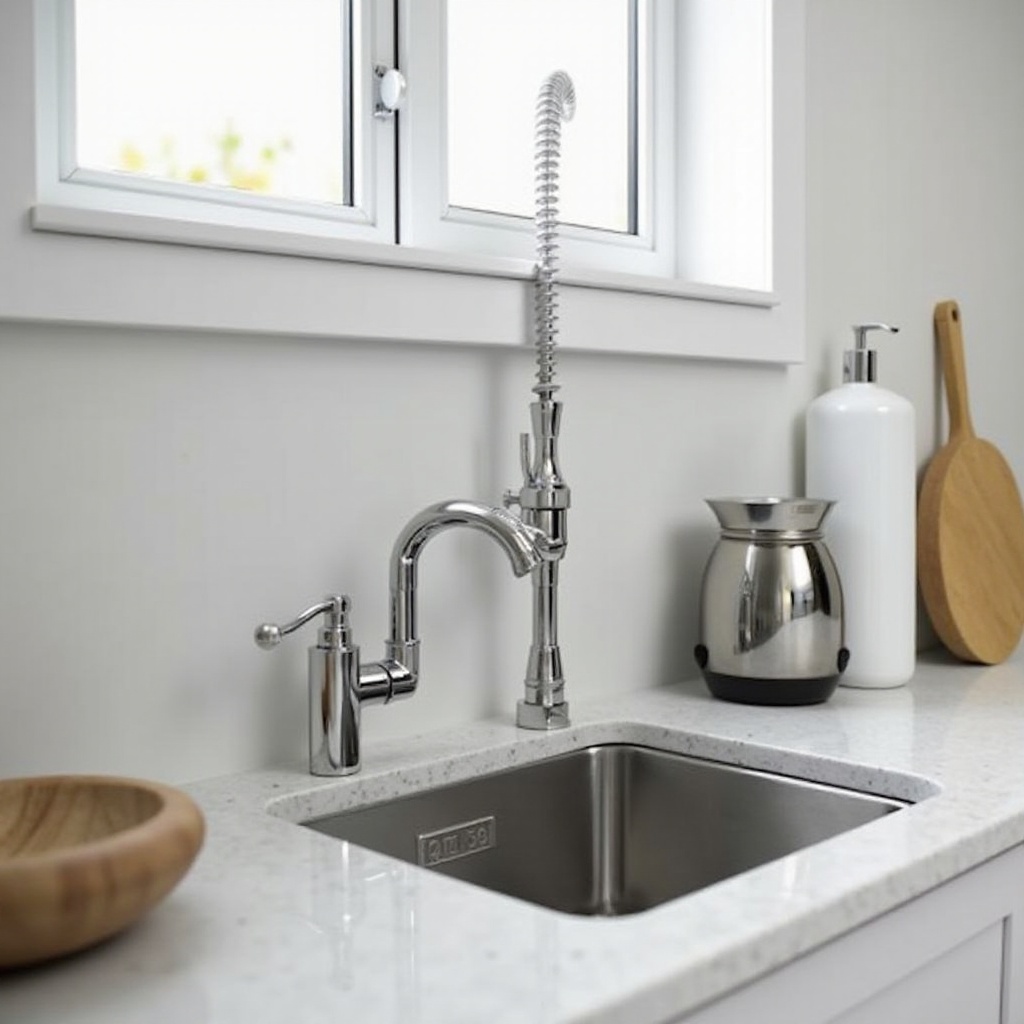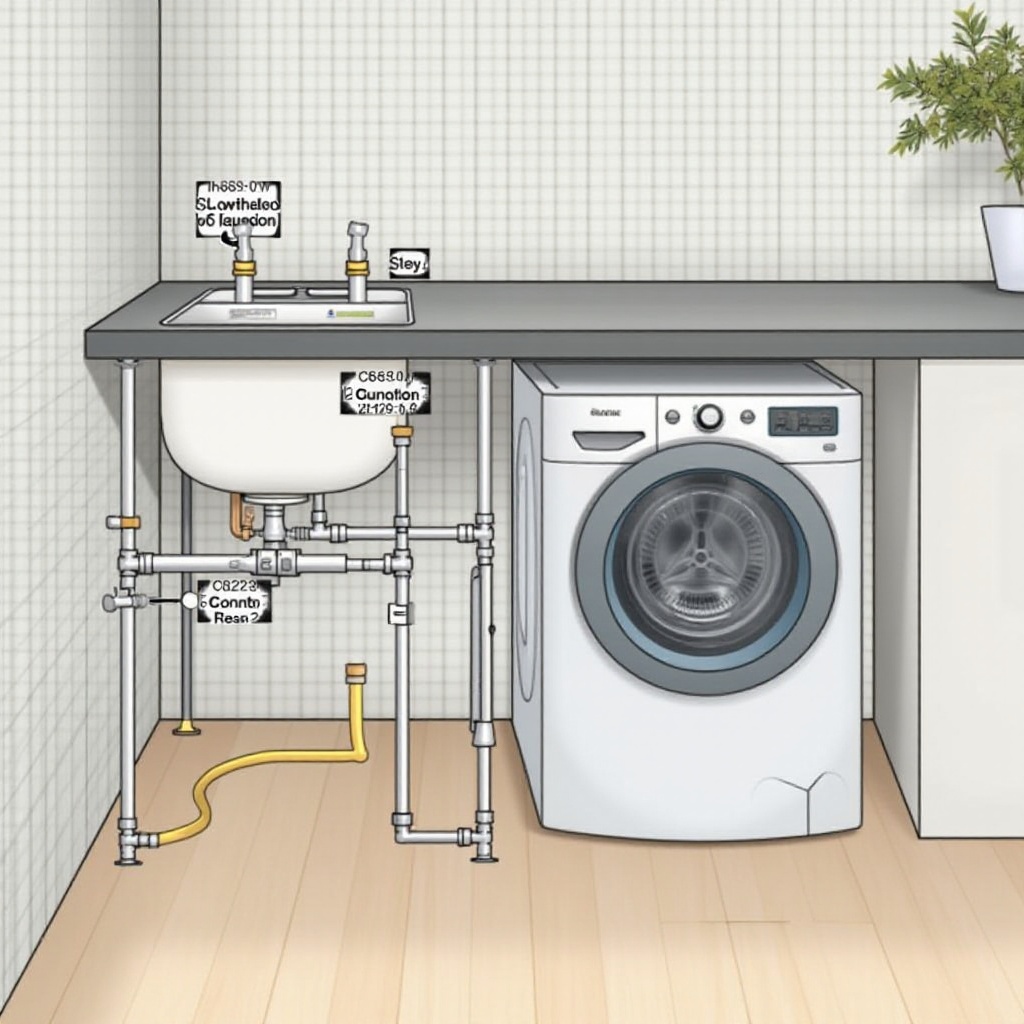Introduction
Connecting a washing machine to your sink can be a real lifesaver, especially in small living spaces where traditional plumbing isn't an option. This setup enables you to maximize your living area while still enjoying the convenience of a washing machine. Follow this comprehensive guide to learn how to connect your washing machine to your sink effectively. Armed with this knowledge, you'll be ready to handle any connectivity challenge with confidence and skill.

Tools and Materials Needed
Before you begin, gather the necessary tools and materials to ensure a seamless installation. Having everything on hand will help you avoid any mid-task interruptions. Here's what you'll need:
- Hose adapters
- Adjustable wrench
- Teflon tape
- Bucket
- Towels
Using this checklist, confirm you've got all the necessary items to make your washing machine connection trouble-free.
Assessing Your Sink and Washing Machine
Before diving into installation, assess the compatibility of your sink and washing machine. Look at the sink's faucet to determine whether it's capable of accommodating the hose adapter required for the washing machine connection. Measure the distance to ensure your washing machine hose is not overly stretched or strained during use. Establishing this compatibility is crucial to smoothly transitioning into the next steps of preparation and setup.

Preparing for Connection
Preparations lay the groundwork for a successful connection. Start by clearing any surrounding clutter from the sink area. This measure prevents potential water damage. Unplug the washing machine from its power source to ensure safety, and cover nearby surfaces with towels or position a bucket nearby to catch any unexpected spills. This setup will keep your workspace clean and protect your floors from unnecessary water exposure.
Step-by-Step Guide to Connecting Your Washing Machine
Here's a simple step-by-step process:
- Connecting the Water Inlet Hose:
- Remove the aerator from your sink's faucet.
- Attach the hose adapter onto the faucet threads, wrapping Teflon tape around them to prevent leaks.
Connect the washing machine inlet hose to this adapter and secure it using the adjustable wrench. Be careful not to overtighten, as this can cause damage.
Securing the Drain Hose:
Place the drain hose securely over the sink, making sure it's firmly anchored with a zip tie or strap. This prevents the hose from detaching during washing cycles.
Testing for Leaks and Proper Function:
- Turn on the water slowly to check for leaks at any connection points.
- Run a short cycle on your washing machine to ensure everything works as expected, monitoring closely for any water escape.
Upon completing these steps, your washing machine should be ready for regular use, providing convenience without the need for extensive plumbing modifications.
Safety Tips and Best Practices
Now that your machine is connected, follow these safety and best practice guidelines to ensure long-term efficiency:
- Routinely inspect the connections for leaks or wear, and tighten as necessary.
- Avoid exposing hoses to water temperatures beyond the washing machine's operating range.
- Disconnect hoses after use to relieve stress on the connections and prevent persistent water flow, which could eventually cause leaks.
These practices help maintain your setup, ensuring both your safety and the longevity of the equipment.
Troubleshooting Common Issues
Despite taking the necessary precautions, you might encounter some issues. Here's how to deal with common problems:
- Leakage at Connection Points: Re-evaluate your connections, applying additional Teflon tape and ensuring secure fastening.
- Poor Water Flow: Check for any bends or kinks in the hose that might be restricting water. Straighten out any interference.
- Noisy Operation: Verify that your washing machine is on a level surface. Adjust its feet to eliminate uneven positioning, which can cause operational noise.
By troubleshooting these common problems, you can avert larger issues and maintain an effective washing machine setup.

Conclusion
Installing a washing machine to a sink offers an efficient and space-saving laundry solution. Through this step-by-step guide, you can set up your washing machine with ease and confidence. Remember, regular checking and maintenance of connections will extend the setup's lifespan, keeping your washing machine running smoothly for many cycles to come.
Frequently Asked Questions
Can I connect any washing machine to my sink?
Yes, most washing machines can be connected to a sink using suitable adapters.
What should I do if there is a leak?
Inspect all connection points, use Teflon tape to seal threads, and tighten the connections properly.
How can I ensure efficient drainage?
Securely position the drain hose over the sink to prevent sagging and ensure unobstructed water flow.
